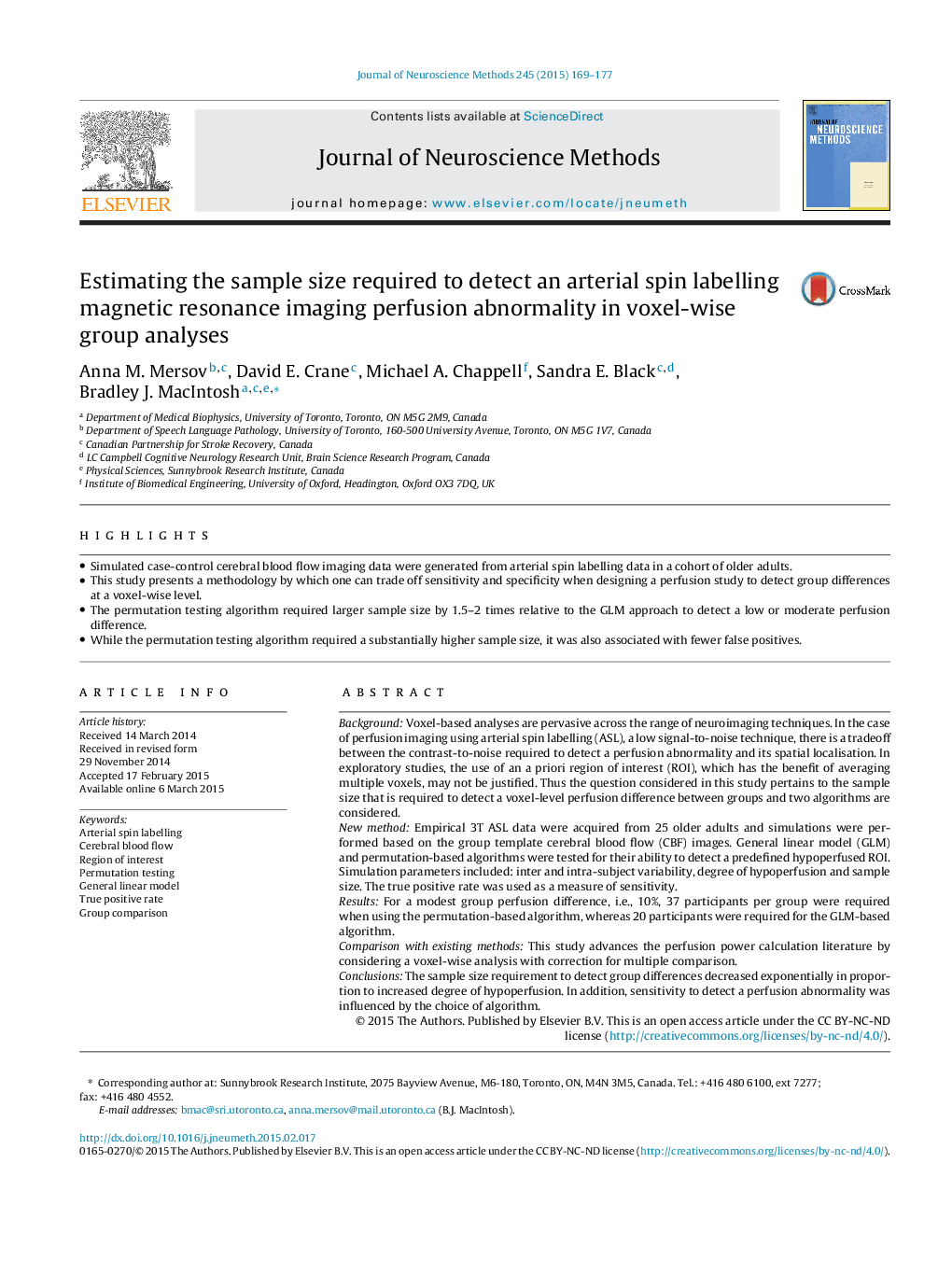| کد مقاله | کد نشریه | سال انتشار | مقاله انگلیسی | نسخه تمام متن |
|---|---|---|---|---|
| 6268285 | 1614624 | 2015 | 9 صفحه PDF | دانلود رایگان |
- Simulated case-control cerebral blood flow imaging data were generated from arterial spin labelling data in a cohort of older adults.
- This study presents a methodology by which one can trade off sensitivity and specificity when designing a perfusion study to detect group differences at a voxel-wise level.
- The permutation testing algorithm required larger sample size by 1.5-2 times relative to the GLM approach to detect a low or moderate perfusion difference.
- While the permutation testing algorithm required a substantially higher sample size, it was also associated with fewer false positives.
BackgroundVoxel-based analyses are pervasive across the range of neuroimaging techniques. In the case of perfusion imaging using arterial spin labelling (ASL), a low signal-to-noise technique, there is a tradeoff between the contrast-to-noise required to detect a perfusion abnormality and its spatial localisation. In exploratory studies, the use of an a priori region of interest (ROI), which has the benefit of averaging multiple voxels, may not be justified. Thus the question considered in this study pertains to the sample size that is required to detect a voxel-level perfusion difference between groups and two algorithms are considered.New methodEmpirical 3T ASL data were acquired from 25 older adults and simulations were performed based on the group template cerebral blood flow (CBF) images. General linear model (GLM) and permutation-based algorithms were tested for their ability to detect a predefined hypoperfused ROI. Simulation parameters included: inter and intra-subject variability, degree of hypoperfusion and sample size. The true positive rate was used as a measure of sensitivity.ResultsFor a modest group perfusion difference, i.e., 10%, 37 participants per group were required when using the permutation-based algorithm, whereas 20 participants were required for the GLM-based algorithm.Comparison with existing methodsThis study advances the perfusion power calculation literature by considering a voxel-wise analysis with correction for multiple comparison.ConclusionsThe sample size requirement to detect group differences decreased exponentially in proportion to increased degree of hypoperfusion. In addition, sensitivity to detect a perfusion abnormality was influenced by the choice of algorithm.
Journal: Journal of Neuroscience Methods - Volume 245, 30 April 2015, Pages 169-177
